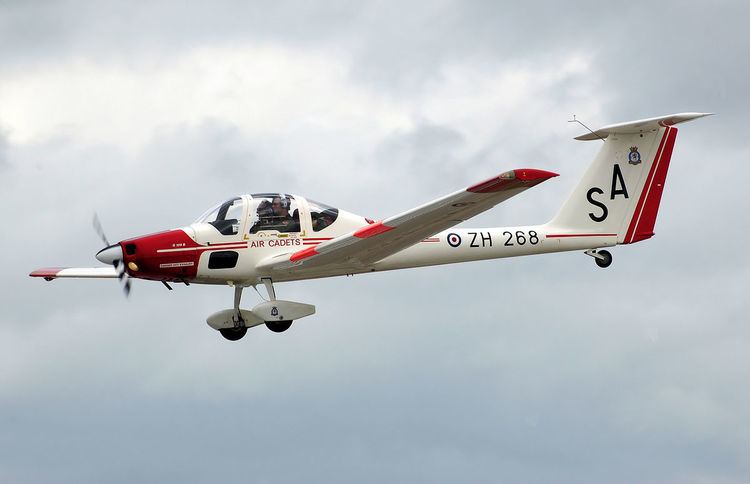Operator Royal Air Force In use 1940-Present Address Topcliffe YO7 3DZ, UK Owner Ministry of Defence | Built 1939 (1939)/40 Identifiers ICAO: EGXZ, WMO: 03275 Elevation 28 m | |
 | ||
Type Royal Air Force station 03/21 1,814 metres (5,951 ft) Asphalt Similar Thirsk, Thirsk Tourist Information, Thirsk Racecour Ltd, Friarage Hospital, Claro Army Barracks | ||
Gliding at raf topcliffe
Royal Air Force Topcliffe or RAF Topcliffe (ICAO: EGXZ) is a Royal Air Force station in North Yorkshire, England. It is a satellite station serving in the role of a Relief Landing Ground for Tucano aircraft of the Central Flying School (CFS) based nearby at RAF Linton-on-Ouse (one of two, the other being Dishforth Airfield). As such, no RAF personnel are based permanently at the airfield and airfield services are provided by personnel assigned to RAF Linton-on-Ouse.
Contents
Topcliffe is also used by the Air Training Corps as a motor glider airfield for Gliding induction courses and Gliding scholarships.
Raf topcliffe gs thriller
History
Topcliffe opened in September 1940 as a bomber station in RAF Bomber Command and was home to 77 and 102 Squadrons flying the Armstrong Whitworth Whitley heavy bomber. There was a decoy site at Raskelf. 419 and 424 Squadrons (RCAF) moved in flying Vickers Wellington bombers and later, the Handley Page Halifax III. On 1 January 1943 the station was transferred to No. 6 Group RCAF and became a training station. The station, along with sub-stations at Wombleton, Dalton and Dishforth were designated as No. 61 (Training) Base in late 1943.
No.1 Air Navigation School was located here between March 1957 & December 1961. The Air Electronics school came in January 1962 and from 1967 became the Air Electronics & Engineers School flying Vickers Varsity T.1 aircraft.
From October 1964 the Northern Communications Squadron flew Avro Anson C.19 aircraft, replacing them with Beagle Basset CC.1 in 1965. The squadron left Topcliffe in January 1969.
The Airman Aircrew Initial Training School was located here from January 1967 until February 1970.
No. 15 Aviation Flight AAC flew de Havilland Canada DHC-2 Beaver AL.1 aircraft from the early 1970s and No. 666 Aviation Squadron AAC flew Westland Scout AH.1 helicopters from here between 1973 and 1978.
The Army moved on to the site in 1974 and renamed much of it Alanbrooke Barracks. However all the flying facilities remain intact. The wartime control tower, with modifications, is still used, and the station is referred to as RAF Topcliffe by the RAF.
During the eighties it was the home of the Royal Navy Elementary Flying School. In the nineties it was temporarily home to a Short Tucano squadron of RAF Central Flying School. It was the home of the Tucano Air Navigation Squadron, teaching student navigators of both the Royal Air Force and the Royal Navy until April 2002 when it moved to RAF Linton on Ouse.
The station is now home to No. 645 Volunteer Gliding Squadron RAF, who teach Air Cadets to fly The Grob Vigilant T.1 Motor Glider and is currently joined by No. 635 Volunteer Gliding Squadron RAF, who have been temporarily re-located from their former airfield.
Other uses
During the 1990s and until 2001, the airfield was utilised by Merlin Parachute Club, home to both the 4 Para Parachute display team and the York University Sport Parachute Club.
As of March 2012, RAF Topcliffe is the permanent base of one of the two Yorkshire Air Ambulances.
The airfield is now a small enclave within Alanbrooke Barracks since the Army took over the rest of the former RAF Station in 1974.
